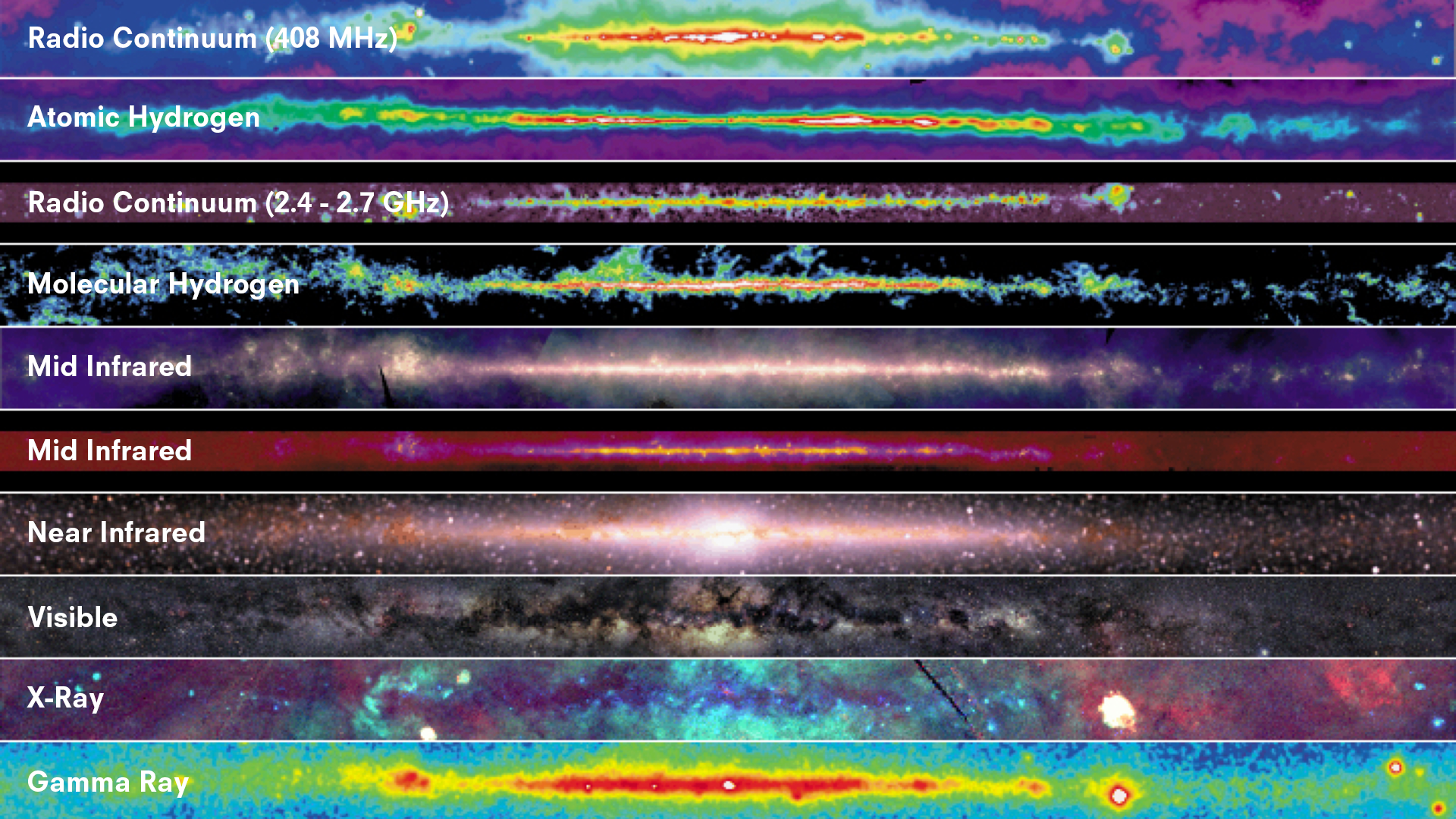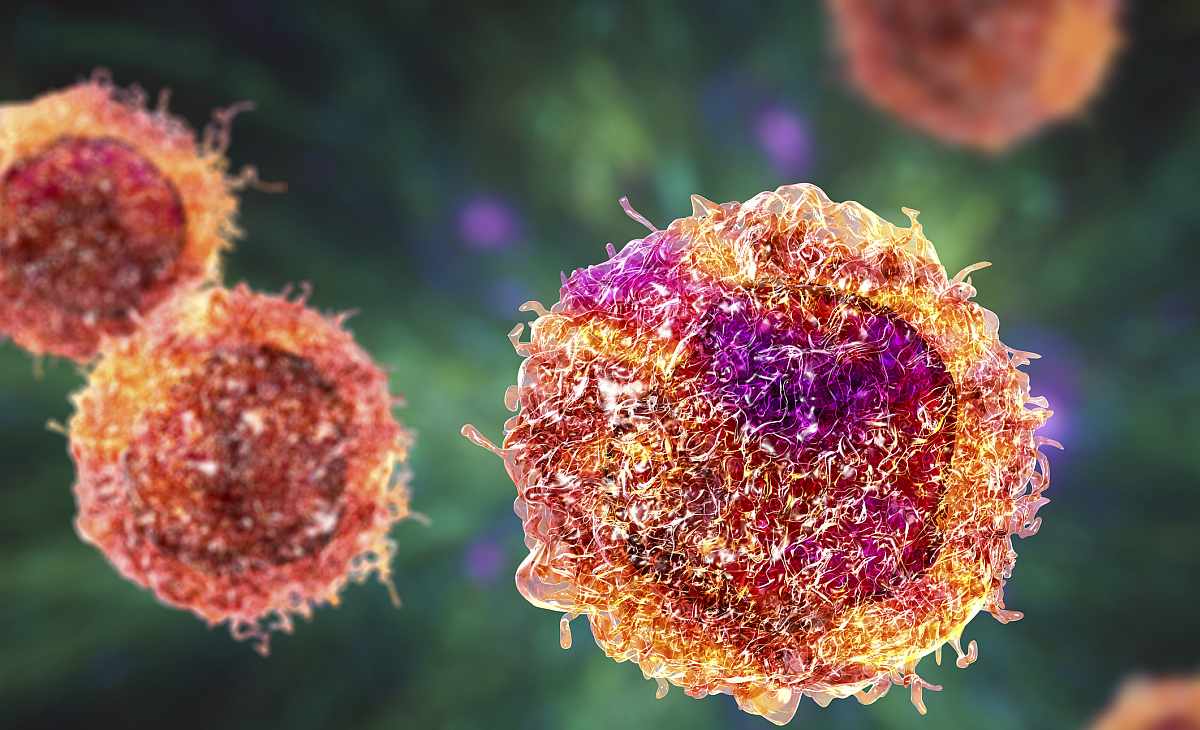You think you might know light, but there’s way more to it than meets the eye. Find out all the flavours that make up the electromagnetic spectrum in this explainer article and video.
This resource has a great explanation of how light works and the electromagnetic spectrum. The video suitable as an introduction to refraction for Year 5 students, and as a refresher and to illustrate the concept of wave models for Year 9. For more of an in-depth study, use the article with senior Physics students to learn about how we can explore space using light.
The teacher resource at the bottom of the page includes a student research activity, an investigation planning task and questions for students.
Word count / Video length: 2481 / 6:02 mins
Each image represents a 360° false color view of the Milky Way within 10° of the galactic plane. Credit: NASA.
There is a family, or spectrum, of waves that all share one thing in common: they travel at 300,000,000 ms-1 in a vacuum. This is because they are all light waves (or particles – but we won’t get into that right now), just not as we know it.
When we think of light, we usually think of what we can see being emitted by the Sun, lightbulbs or our phone torches. We think of the colours of the rainbow from red through to violet. But there are actually many other wavelengths of light that are undetectable by the human eye. These make up the electromagnetic spectrum.
We can detect these in other ways – for example, with our skin or using special cameras and telescopes. By using technology, we have been able to understand the huge range of light being emitted, reflected and refracted across the Universe which has taught us so much including what distant stars are made of, how the Universe began, and we can even get images from inside the body and treat some cancers using light.
So let’s have a closer look at the electromagnetic spectrum.
Visualising outer space with the electromagnetic spectrum
Gamma rays
- Wavelength range: < 1×10-12 m
- Frequency range: 1×1020 – 1×1024 Hz
- Speed of wave: 3×108 ms-1
Gamma rays are the highest energy waves in the electromagnetic spectrum with over one billion times more energy than visible light. This means they have a very short wavelength and a high frequency. They are usually produced when a radioactive nucleus decays or in cosmic events called gamma ray bursts.
Due to their high energy, they are called ionising radiation, which means they remove electrons from atoms when they interact. This leaves the atom with a positive charge and it will be more chemically reactive: this is both a good and bad thing.
We can use gamma rays to sterilise medical equipment, store food detect leaks in oil pipelines and cause chemical changes in certain types of crystals to make them more valuable.
However, the best-known application of gamma rays is to kill cancer cells. A beam of gamma rays can be targeted at a cancerous tumour; unfortunately, they often kill healthy cells at the same time, but medical researchers are trying to make this technology more accurate to better protect the patient. This is called radiotherapy. Gamma rays can also be used to detect cancer through gamma cameras. You can find out more about this here.
Gamma rays are created by some of the most exotic objects in the Universe, like black holes, neutron stars and active galaxies. Scientists hope that by understanding gamma rays, they can learn how the laws of physics work in extreme environments. To do this, NASA developed the Fermi Gamma-ray Space Telescope, which orbits Earth spotting gamma rays and detecting mysterious gamma-ray bursts. This information is then sent back to scientists on Earth who analyse and visualise the data.
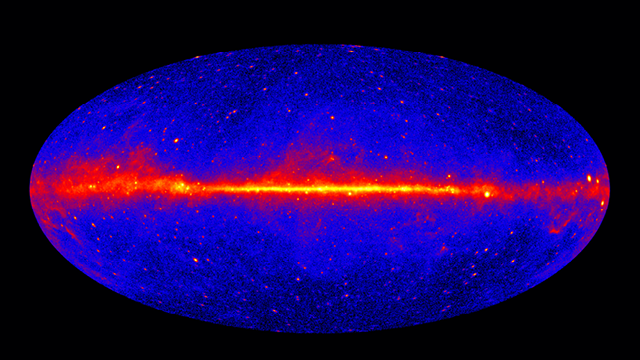
X-rays
- Wavelength range: 1×10-9 – 1×10-12 m
- Frequency range: 1×1017 – 1×1020 Hz
- Speed of wave: 3×108 ms-1
You might be familiar with X-rays if you have been unlucky enough to break a bone, but they are also part of the electromagnetic spectrum and have many more uses. They are also high energy waves – though not as energetic as gamma – and they were accidentally discovered in 1895 by a German scientist. A week after the discovery, he took an X-ray photograph of his wife’s hand which clearly showed her bones and wedding ring. He named it ‘X’ to indicate it was an unknown type of radiation.
So how does an X-ray photograph work? Due to their high energies, X-rays pass straight through soft material, like body tissue and are absorbed by hard materials, like bone. During a scan, the X-rays are directed at the body onto a photographic film plate behind the body, and when the X-rays strike the film, it ionises and changes colour. If the X-rays are fully or partially absorbed by the body the film won’t change colour, or it might only change slightly.
X-rays are used in airport security scanners – and even in archaeology and art conservation, to learn about finds without having to open and potentially destroy them.
X-rays are also used in astronomy. NASA’s Chandra X-ray Observatory was launched in 1999 and remains in a low-Earth orbit. X-rays are produced in space when matter is heated to millions of degrees, such as in areas of extreme gravity, strong magnetic fields or explosive forces. X-ray telescopes, like Chandra, can trace hot gas from exploding stars or even detect xX-rays emitted from matter swirling as close as 90 km from the event horizon of a black hole! Using Chandra, we can better understand the hot, turbulent regions of space to help us and learn more about the origin, evolution and destiny of the Universe.
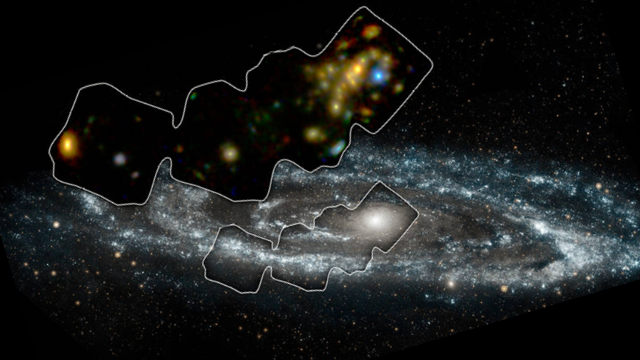
Ultraviolet
- Wavelength range: 4×10-7– 1×10-9 m
- Frequency range: 1×1015 – 1×1017 Hz
- Speed of wave: 3×108 ms-1
Ultraviolet or UV light is the neighbour to the violet light we can see in the visible part of the spectrum. Since it has a higher frequency than violet light, it was called ultraviolet. It’s also why we often think of it as having a glowing purple colour; it often emits visible wavelengths at the same time.
Although we cannot detect UV light with our eyes, our skin can detect it. It is UV light that changes the colour of our skin and makes us tan. We also use UV light in fluorescent lights, to kill germs in dirty water, and in blacklights which you might have experienced in nightclubs where your clothes glow without shining visible light on them.
This is because when the UV light is shone onto something that is UV-sensitive, it is absorbed and then re-emitted as visible light, which is called fluorescence. Chemicals that fluoresce are in whitening laundry power to make your white clothes glow even brighter. It also has applications in security – tagging something with a UV-sensitive dye means the tag is invisible in normal situations but visible when UV light is shone on it. Currency often has UV markers printed on it – only genuine notes will have the correct marks under UV light.
Some animals have actually evolved to see UV light to help them survive in environments where there is little to no visible light. We know animals such as butterflies, reindeer, bees and scorpions can all do this, but there are lots more.
The Hubble Space Telescope is one of the best-known UV detectors. It was launched by NASA in 1990 and orbits the Earth high above the clouds, light pollution and atmospheric distortions to ensure it gets a clear view of the Universe. Hubble has been serviced five times and new instruments have been added to it over the years to keep it at the cutting edge of space technology.
Over its lifetime, Hubble has made over 1.4 million observations, delivering stunning images of planets, stars, galaxies and other astronomical objects which have changed our understanding of the Universe. The telescope has tracked interstellar objects as they soared through our solar system, watched a comet collide with Jupiter, and discovered moons around Pluto. It has found dusty disks and stellar nurseries throughout the Milky Way that may one day become fully-fledged planetary systems and studied the atmospheres of planets that orbit other stars. Hubble has peered back into our Universe’s distant past, to locations more than 13.4 billion light-years from Earth, capturing galaxies merging, probing the supermassive black holes that lurk in their depths, and helping us better understand the history of the expanding Universe.

Visible light
- Wavelength range: 4×10-7–7.5×10-7m
- Frequency range: 1×1014 – 7.5×1014 Hz
- Speed of wave: 3×108 ms-1
Visible light has only been called visible light since we discovered that there were other types of electromagnetic radiation. Before that, it was the only known light!
Sir Isaac Newton was the first person to demonstrate that white light was made up of all other colours of light and that those colours refracted by different amounts when he shone a light beam through a prism of glass.
The most obvious use of visible light is vision. Humans can only see in the visible spectrum, with our most sensitive to green light at a wavelength of roughly 550 nanometres, or 5.5 x 10-7m. Visible light makes up a tiny, tiny portion of the electromagnetic spectrum.
We also use visible light for photography, and for illumination of the areas that we live in. Most lasers use visible light, and they have many applications such as creating and reading CDs and DVDs, as well as less common uses such as range-finding in military software and surveying – that is, checking the level of ground before building a house, road or other large building projects.
Visible light can pass right through our atmosphere, which is why astronomy is as old as humanity. Ancient humans could look up at the night sky and see the stars above them. Today, there is an army of ground-based telescope facilities for visible astronomy (also called optical astronomy). However, there are limits to ground-based optical astronomy. As light passes through the atmosphere, it is distorted by the turbulence in the air. Astronomers can improve their chances of a good image by putting observatories on mountain-tops, but there are still limits to how crisp their images will be, especially for faint sources.
Visible-light observatories in space avoid the turbulence of the Earth’s atmosphere. In addition, they can observe a somewhat wider portion of the electromagnetic spectrum, in particular ultraviolet light that is absorbed by the Earth’s atmosphere. The Hubble Space Telescope is perhaps the most famous optical telescope in orbit. The Kepler observatory is another – it uses visible light to survey a portion of the Milky Way galaxy to discover planetary systems. The Swift satellite also carries an UltraViolet and Optical Telescope (the UVOT) to complement its observations of gamma-ray bursts.
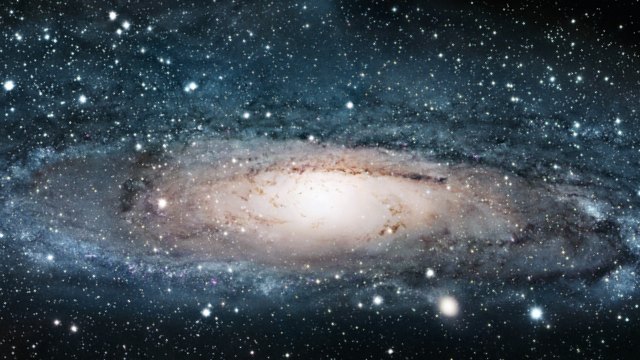
Infrared
- Wavelength range: 2.5×10-5– 2.5×10-6 m
- Frequency range: 1×1013 – 1×1014 Hz
- Speed of wave: 3×108 ms-1
Infrared light was discovered by the astronomer William Herschel in 1800 when he passed white light through a prism and measured the temperature rise as each colour shone on a thermometer. To his surprise, a thermometer placed beyond the red end of the visible spectrum continued rising in temperature. This proved there was light beyond the visible, undetectable by the human eye.
Infrared is another type of light we can detect with our skin; we feel it as heat. It is emitted by hot objects and can be used in several ways. We can use it to cook our food and it makes up most of the energy we get from the Sun. Infrared radiation is also used in thermal imaging cameras, like those used by the military. The best ones can tell exactly what temperature a surface is, just by the wavelength of radiation emitted.
Since infrared radiation is easily absorbed by the atmosphere and other objects, it can be used for short-range communications such as remote controls or military radios without worrying about interference signals.
The Spitzer Space Telescope was launched by NASA to detect infrared radiation. It is made up of two major components: the cryogenic telescope assembly, which contains the 85 cm telescope and its scientific instruments and the spacecraft which controls the telescope, provides power and communicates with the Earth.
Spitzer’s highly sensitive instruments allow scientists to peer into cosmic regions that are hidden from optical telescopes, including dusty stellar nurseries, the centres of galaxies, and newly forming planetary systems. Spitzer’s infrared eyes also allow astronomers to see cooler objects in space, like failed stars (brown dwarfs), extrasolar planets, giant molecular clouds, and organic molecules that may hold the secret to life on other planets.

Microwave
- Wavelength range: 2.5×10-5– 1×10-3 m
- Frequency range: 3×1011 – 1×1013Hz
- Speed of wave: 3×108 ms-1
Microwaves are very familiar to us as the radiation that cooks our food. This (relatively) long wavelength, low-frequency type of light has increased in popularity in the last three decades.
Microwave ovens use microwaves to heat the water molecules inside food. If the food contains no water, a microwave will be far less effective at heating it. Similarly, if food is frozen, it will be heated far less until some of the ice melts and becomes water.
In the last 20 years, there has been a huge increase in the use of microwaves for one particular application – mobile phones. Mobile phones use microwaves to communicate with their base stations. This alarms some people – if microwaves are used for heating, and they’re also used for mobile phones, does that mean they heat your brain?! Relax – mobile phones use approximately 1000 times less power than a typical microwave oven, and they emit radiation in all directions, at different wavelengths.
Microwaves are also used for satellite communications and wi-fi. In the future, there are hopes that they’ll be used to transmit power, from solar power stations in space, back down to Earth.
The European Space Agency’s Planck telescope collects light from the Cosmic Microwave Background radiation which is a remnant of the Big Bang. Planck measures the temperature variations across this microwave background with much better sensitivity, angular resolution and frequency range than any previous satellite, giving astronomers an unprecedented view of our Universe when it was extremely young, just 300,000 years old.

Radio waves
- Wavelength range: > 1 mm
- Frequency range: < 3×1011 Hz
- Speed of wave: 3×108 ms-1
When we think of radio waves we instantly think of radios used to listen to music and communicate through. These use long wavelengths to carry the signals to aerials, which decode the signals into audio or TV pictures.
Radio waves were first predicted to exist in 1865 and then proved in 1887. Today, they are primarily used for communications and broadcasting. Each TV or radio station has a different frequency they broadcast their information from.
Radio waves are useful for communication because of their long wavelength. This allows the waves to diffract over hills and valleys and reflect from the Earth’s ionosphere. They can reach around corners where other types of waves would not be able to.
A lesser-known use of radio waves is in magnetic resonance imaging (MRI), where the radio waves are used to oscillate atoms inside the human body.
There are many radio telescopes on Earth, the largest of which is the Square Kilometer Array (SKA). This is an international project that will use thousands of dishes to monitor the sky in detail never before achieved. Astronomers will be able to survey the sky much faster than any current system, with an image resolution clearer than Hubble, even though the SKA is on Earth!
Both South Africa’s Karoo region and Western Australia’s Murchison area will co-host the array of radio telescopes, mainly because they are remote locations with ‘radio quietness’. This means there is very little noise from human-made radiowaves.
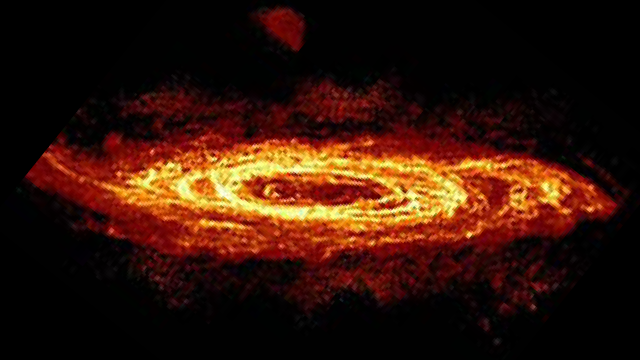
We can’t learn about the Universe by looking at only one type of light. It is only when we bring them together that we can really understand what is going on beyond the visible.
Login or Sign up for FREE to download a copy of the full teacher resource
